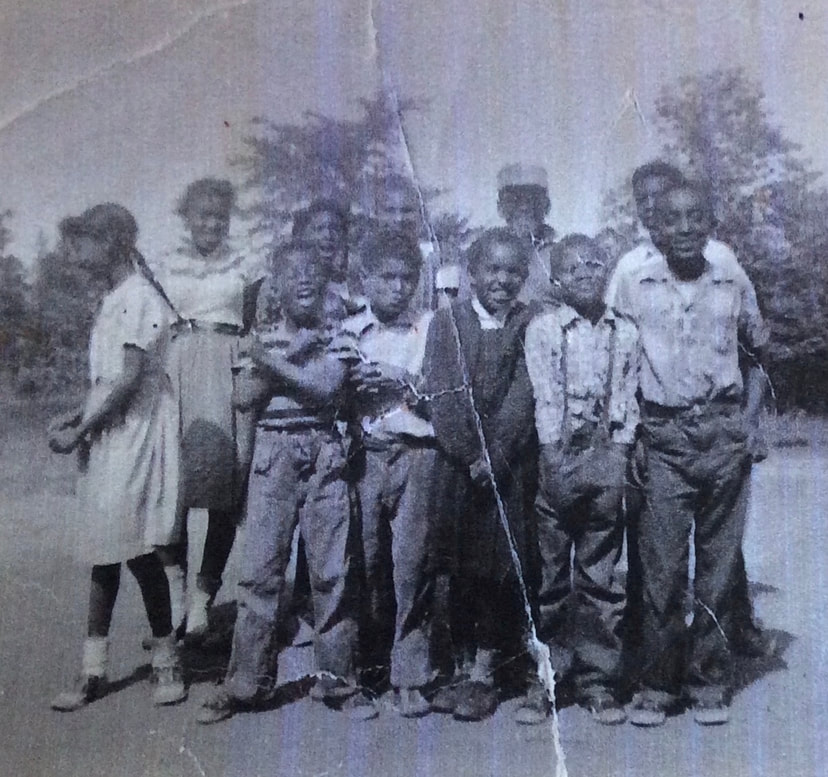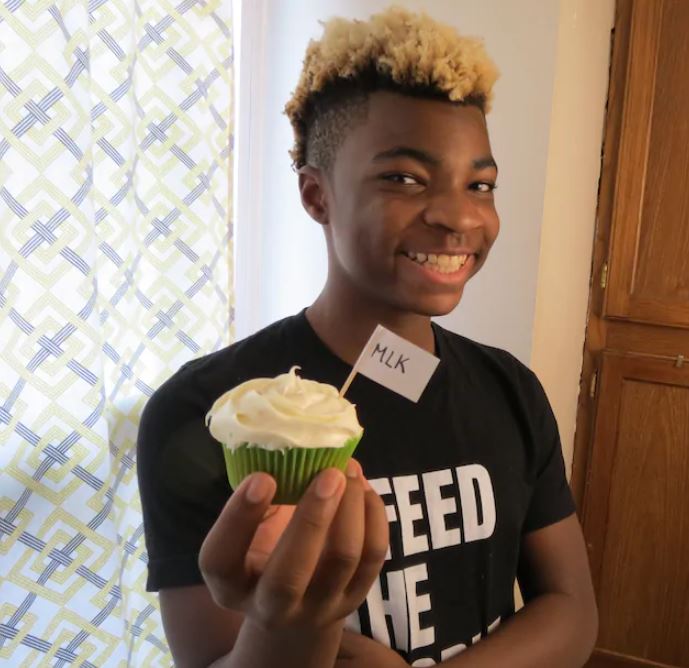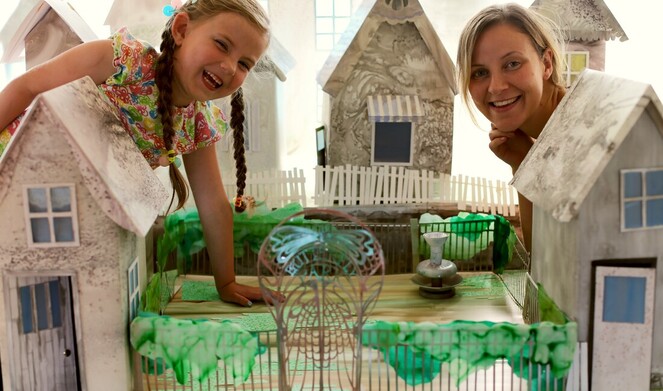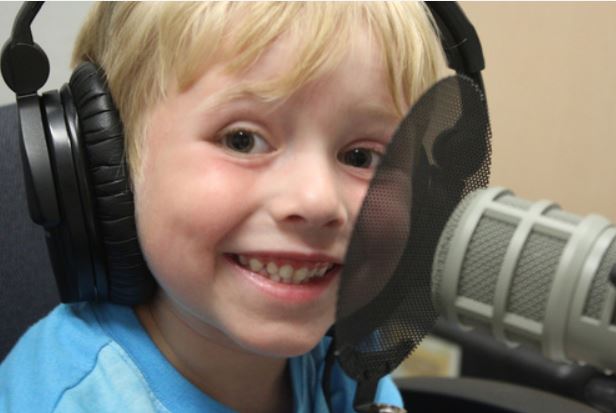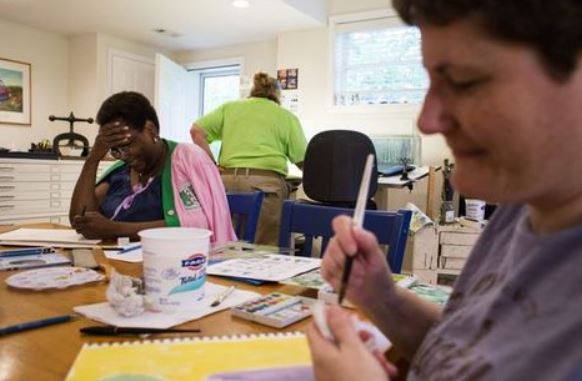Preserving school that is part of segregated past
|
History isn’t just a time, it’s also a place.
Farms where civil rights protesters camped. A Navajo trading post. Or a rural schoolhouse. That last one strikes a familiar chord for Muriel Branch. “The only way you knew what grade you were in was by the row you sat on,” recalls the 78-year-old of her time at Pine Grove Elementary School in Cumberland County, Virginia. Pine Grove was small. One room was a classroom. Another held jackets and firewood. It was also where Branch played house under pines and read books when she finished classwork early. Today, Branch is president of the AMMD Pine Grove Project, a group of community members and former students dedicated to giving the school renewed purpose. A Rosenwald school, Pine Grove was one of thousands built in the South over two decades to provide better schools for Black children during segregation. After the U.S. Supreme Court desegregated schools in 1954, separate schools, such as Pine Grove, eventually closed. Read more (Washington Post KidsPost, Aug. 25, 2021) |
Jane Goodall became a champion for chimpanzees. It started with a dream.
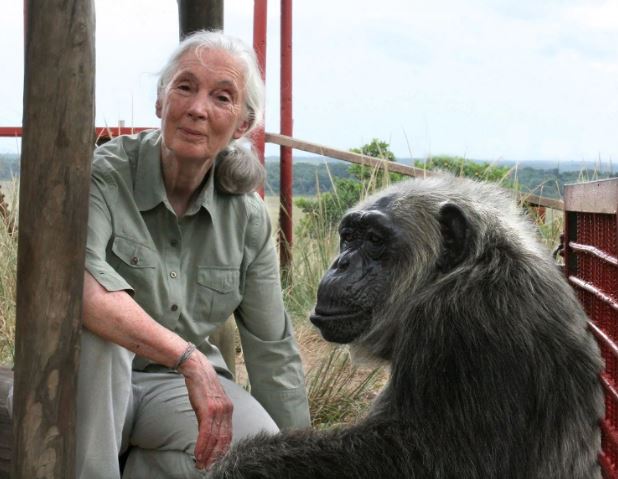
Jane Goodall was a 10-year-old with a dream. A dream of diving headfirst into fictional tales such as “Tarzan of the Apes” to live with wild animals in Africa. “Everybody laughed,” Goodall, now 86, recalls.
Everyone, except Goodall’s mother, Vanne Morris-Goodall.
“Mom said, ‘If you really want something like this, you’re going to have to work really hard. Take advantage of every opportunity. But if you don’t give up, you’ll probably find a way.’ ”
Just 16 years later, that starry-eyed British girl stepped onto the shores of the Gombe Stream Game Reserve in Tanganyika (now Tanzania). It was July 14, 1960. She had been sent by anthropologist Louis Leakey with a simple-sounding mission that was anything but: Watch chimpanzees in the wild.
“The problem was the chimps ran away as soon as they saw me,” Goodall says. “Nobody had studied them before.”
Read more (Washington Post KidsPost, July 7, 2020)
Everyone, except Goodall’s mother, Vanne Morris-Goodall.
“Mom said, ‘If you really want something like this, you’re going to have to work really hard. Take advantage of every opportunity. But if you don’t give up, you’ll probably find a way.’ ”
Just 16 years later, that starry-eyed British girl stepped onto the shores of the Gombe Stream Game Reserve in Tanganyika (now Tanzania). It was July 14, 1960. She had been sent by anthropologist Louis Leakey with a simple-sounding mission that was anything but: Watch chimpanzees in the wild.
“The problem was the chimps ran away as soon as they saw me,” Goodall says. “Nobody had studied them before.”
Read more (Washington Post KidsPost, July 7, 2020)
Teen creates a cupcake to honor Martin Luther King
|
Michael Platt has admired the Reverend Martin Luther King Jr. since kindergarten.
“He saw a problem he wanted to fix and wasn’t hesitant about it,” says the 14-year-old. It’s a lesson Michael took to heart. As chef and owner of Michaels Desserts, a home-based bakery in Bowie, Maryland, Michael donates a treat to those in need for each one he sells. (The business name has no apostrophe to remind Michael that they aren’t his desserts; he bakes for others.) In honor of Martin Luther King Jr. Day on Monday and Black History Month in February, Michael is selling sweet potato pie-flavored cupcakes (four cupcakes for $15 at michaelsdesserts.com). The flavor honors a traditional African American dessert, he says, “to represent a great African American.” Want to make it yourself? Here’s an adapted version of Michael’s dreamy recipe. Read more (Washington Post KidsPost, Jan. 15, 2020) |
Little Free Libraries have made a big impactWant a book? Head to a rocket ship in Boulder, Colorado, a fairy-tale cottage near Ghent, Belgium, or a tree in Coeur d’Alene, Idaho.
These are just three of the more than 80,000 Little Free Libraries in more than 90 countries. Unlike traditional libraries, these typically small structures aren’t buildings where people check out books from a librarian. “A Little Free Library is a box full of books that, when you find one, you can take a book home with you,” explains Margret Aldrich, Little Free Library spokeswoman. “Or if you have a book to share, you can leave it for someone else to read.” Read more (Washington Post KidsPost, May 14, 2019) |
Author-illustrator brings words to life with 3-D art
|
Ever make a fairy treehouse? What about a gliding whale or misty waterfall? Elly MacKay can say yes to all three. “The fun thing with this medium is there’s always more to experiment with,” says the 37-year-old author and illustrator.
The dreamy, shimmering art in the nine picture books she has written and illustrated since 2013 aren’t just a product of paper, paint and ink. They’re three-dimensional scenes MacKay builds, lights and photographs inside small theaters at her home in Owen Sound, Ontario. Cool? Yes. Easy to do? Hardly. MacKay’s latest title, “The Tallest Tree House” tells the story of two fairies, Mip and Pip, who compete to build the best treehouse. Illustrating the fairy girl Mip’s teeteringly high creation led MacKay to build a 2½ -feet-tall tower made of foam board and thin wood strips. Read more (Washington Post KidsPost, May 7, 2019) |
As a mother, I feel like I need to march this time

At 37, I’ve been a journalist more than half my life.
While my work has followed a wide array of topics — from flying cars to a Ginger Baker documentary — I typically shy away from the controversial, instead writing pieces that focus on life’s upbeat or atypical aspects.
Since I had my daughter, Juniper, nearly 2½ years ago, my tendency to “play it safe” grew.
There was always a reason.
During the Women’s March in January 2017, I was frantically weaning Juniper two months later than expected — while moving for the second time in less than two years. When debate raged last summer over Confederate monuments, I opted not to pitch a story idea — in which I’d photograph daily happenings at Confederate statues along Richmond’s Monument Avenue — thinking I’d put myself, now a mom, at unnecessary risk.
Read more (Washington Post On Parenting, March 7, 2018)
While my work has followed a wide array of topics — from flying cars to a Ginger Baker documentary — I typically shy away from the controversial, instead writing pieces that focus on life’s upbeat or atypical aspects.
Since I had my daughter, Juniper, nearly 2½ years ago, my tendency to “play it safe” grew.
There was always a reason.
During the Women’s March in January 2017, I was frantically weaning Juniper two months later than expected — while moving for the second time in less than two years. When debate raged last summer over Confederate monuments, I opted not to pitch a story idea — in which I’d photograph daily happenings at Confederate statues along Richmond’s Monument Avenue — thinking I’d put myself, now a mom, at unnecessary risk.
Read more (Washington Post On Parenting, March 7, 2018)
Are flying cars for real? After nearly a century of trying, inventors have the right materials
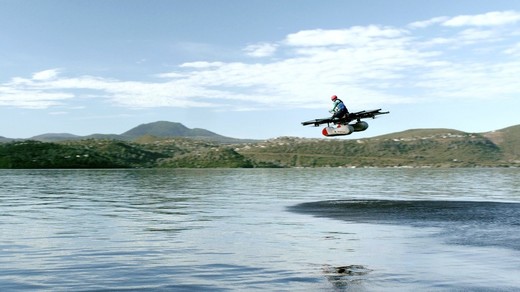
Imagine a flying car. Does it look like a fancy sports car with foldable wings? Or a Jet Ski-like craft that seems to float above water?
These aren’t make-believe.
That sports car/plane combo is called the AeroMobil Flying Car. The latest model — which can be ready to fly in less than three minutes — was previewed recently with a promised arrival of 2020. The vehicle zooming above water has a name, too: the Kitty Hawk Flyer, an all-electric creation expected by year’s end.
These are two of more than a dozen present-day plans.
What’s driving this sky-high frenzy?
“Technology has changed,” says Dorothy Cochrane, a general-aviation curator at the National Air and Space Museum in Washington. “The ultimate design of a flying car is going to be so much different than what people were trying to do for years.”
Read more (Washington Post KidsPost, May 16, 2017)
These aren’t make-believe.
That sports car/plane combo is called the AeroMobil Flying Car. The latest model — which can be ready to fly in less than three minutes — was previewed recently with a promised arrival of 2020. The vehicle zooming above water has a name, too: the Kitty Hawk Flyer, an all-electric creation expected by year’s end.
These are two of more than a dozen present-day plans.
What’s driving this sky-high frenzy?
“Technology has changed,” says Dorothy Cochrane, a general-aviation curator at the National Air and Space Museum in Washington. “The ultimate design of a flying car is going to be so much different than what people were trying to do for years.”
Read more (Washington Post KidsPost, May 16, 2017)
The rise of the consignment parent
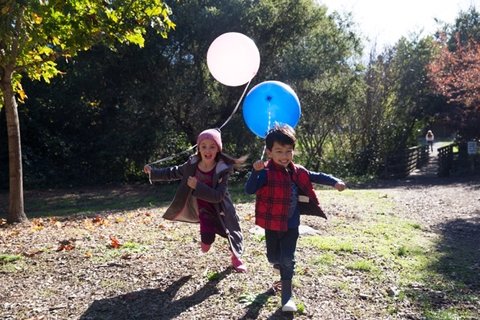
Clutching a snowsuit, I faced a marital dilemma.
Before I left to buy winter attire for our daughter, my husband, Sean, had one request in anticipation of my anti-pink penchant when it came to Juniper’s clothing: “Don’t buy something too boyish.”
This snowsuit was blue. With a football helmet on it.
It was also $7.
There was another option in the 12-month size at my local Kid to Kid children’s resale store — a more attractive plaid for $15 — but to pay twice as much seemed silly, even downright wrong. Chuckling, I wondered if other parents were increasingly following variations of what I’ve dubbed my “consignment mama” mindset – i.e., a preference for buying youth clothing and toys secondhand.
Are we in the midst of a children’s resale renaissance? Or is this something I’m only aware of as a new parent? After all, eBay is well beyond its adolescence and Goodwill is a household name. So I did what any curious, stay-at-home mommy/reporter would do: I set up nap chats (i.e., interviews during Juniper’s afternoon snooze) to dive into the bargain bin of buying for kids.
Read more (Washington Post On Parenting, April 25, 2017)
Before I left to buy winter attire for our daughter, my husband, Sean, had one request in anticipation of my anti-pink penchant when it came to Juniper’s clothing: “Don’t buy something too boyish.”
This snowsuit was blue. With a football helmet on it.
It was also $7.
There was another option in the 12-month size at my local Kid to Kid children’s resale store — a more attractive plaid for $15 — but to pay twice as much seemed silly, even downright wrong. Chuckling, I wondered if other parents were increasingly following variations of what I’ve dubbed my “consignment mama” mindset – i.e., a preference for buying youth clothing and toys secondhand.
Are we in the midst of a children’s resale renaissance? Or is this something I’m only aware of as a new parent? After all, eBay is well beyond its adolescence and Goodwill is a household name. So I did what any curious, stay-at-home mommy/reporter would do: I set up nap chats (i.e., interviews during Juniper’s afternoon snooze) to dive into the bargain bin of buying for kids.
Read more (Washington Post On Parenting, April 25, 2017)
Punxsutawney Phil isn’t your everyday — or even your one-day — groundhog
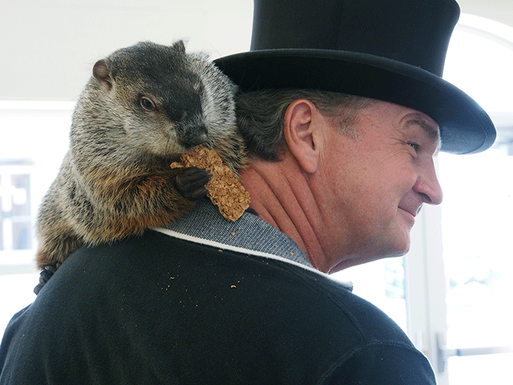
Punxsutawney Phil is legendary. After all, the 20-pound groundhog has made famous forecasts on February 2, Groundhog Day, for decades.
That morning, the Punxsutawney, Pennsylvania, resident is lifted from a stump at Gobbler’s Knob, the ceremony site two miles from town. If he sees his shadow during the annual folkloric tradition, it is believed that six more winter weeks are coming. If not, expect early spring.
There’s a live broadcast. Thousands of spectators. Then it’s soon over.
What’s Phil doing the rest of the year? Probably munching a favorite vegetable.
“We tried corn on the cob, and he fell in love,” says 56-year-old John Griffiths, one of two volunteer handlers who cares for Phil year-round. In addition to carrots, celery, lettuce and kale, Phil eats granola bars. They’re treats with a purpose: Groundhogs have two teeth that never stop growing, so the bars help Phil wear them down.
Read more (Washington Post KidsPost, Feb. 1, 2017)
That morning, the Punxsutawney, Pennsylvania, resident is lifted from a stump at Gobbler’s Knob, the ceremony site two miles from town. If he sees his shadow during the annual folkloric tradition, it is believed that six more winter weeks are coming. If not, expect early spring.
There’s a live broadcast. Thousands of spectators. Then it’s soon over.
What’s Phil doing the rest of the year? Probably munching a favorite vegetable.
“We tried corn on the cob, and he fell in love,” says 56-year-old John Griffiths, one of two volunteer handlers who cares for Phil year-round. In addition to carrots, celery, lettuce and kale, Phil eats granola bars. They’re treats with a purpose: Groundhogs have two teeth that never stop growing, so the bars help Phil wear them down.
Read more (Washington Post KidsPost, Feb. 1, 2017)
Thanks for getting me through the early days of being a mom, NPR

Having a baby gives a person perspective on their life relationships … for better and worse. There are people who show up empty-handed during the delirious early days and drink most of your diminished beer supply. Others arrive unannounced, leaving an aromatic bowl of beef stew on the front stoop.
Yet it’s the increasing essentialness of one particular acquaintance that’s surprised me most.
The NPR News app on my iPhone.
While I’ve listened to NPR for years — usually when driving or doing housework — I’ve recently noticed that the app I’ve often taken for granted (like a faucet I could turn on and off when needed) is gaining appreciated prominence in my daily life.
Why? It likely has something to do with the fact that the two beings I spend the most time with — a fearful dog and a feisty 1-year-old — communicate mostly through barks, babbles, whines and cries. As a fledgling stay-at-home mom, sporadically listening to public radio throughout the day has been a sanity-saver as I adjust to a life that’s dictated by nap and meal schedules.
Read more (Washington Post On Parenting, Jan. 12, 2017)
Yet it’s the increasing essentialness of one particular acquaintance that’s surprised me most.
The NPR News app on my iPhone.
While I’ve listened to NPR for years — usually when driving or doing housework — I’ve recently noticed that the app I’ve often taken for granted (like a faucet I could turn on and off when needed) is gaining appreciated prominence in my daily life.
Why? It likely has something to do with the fact that the two beings I spend the most time with — a fearful dog and a feisty 1-year-old — communicate mostly through barks, babbles, whines and cries. As a fledgling stay-at-home mom, sporadically listening to public radio throughout the day has been a sanity-saver as I adjust to a life that’s dictated by nap and meal schedules.
Read more (Washington Post On Parenting, Jan. 12, 2017)
Six-year-old shares his love of science through a podcast
|
Nate Butkus isn’t afraid to ask the tough questions.
“Have you ever met a space shark or space dolphin?” “What type of heat does Rudolph’s nose give out?” “When do ants start to hibernate?” These are just a few the 6-year-old has asked on “The Show About Science,” a podcast he’s hosted since July 2015. The recorded audio show — which can be listened to on a computer, cellphone or other streaming devices — features the Wilmette, Illinois, first-grader talking with experts in the subject he’s loved for half his life. “Back when I was 3, I mixed water, salt and food coloring, and I made red salt water,” he says. “I’ve been interested in science ever since.” Read more (Washington Post KidsPost, Dec. 12, 2016) |
New parents take baby steps toward family travel with a three-day getaway to Annapolis
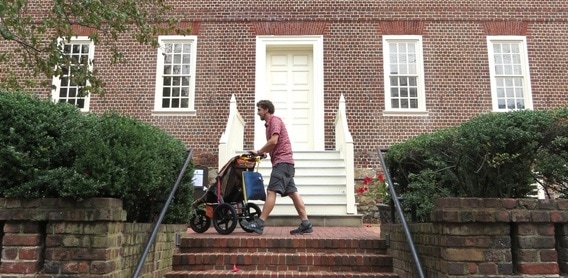
"Hold that boat!”
One thing I’ve learned as a new stay-at-home mom is to make the most of life between my baby’s naps and mealtimes. That’s why I ran past the yachts and sailboats anchored along “Ego Alley” in Annapolis, Md., to flag down the Harbor Queen before its last daily departure at 4 p.m.
Moments later, my husband, Sean, and our 10-month-old daughter, Juniper, basked in the early fall sunshine atop the double-decker boat as we took a 40-minute tour along Annapolis Harbor, taking in sights that included a sailboat race, a Naval Academy football team practice and a cameo by Woodwind II, the schooner that Christopher Walken pretends to sail in “Wedding Crashers.”
The outing came at the tail end of our three-day getaway, our first solo vacation as a young family. We had settled on this early fall trip to the small, coastal city after booking — and then canceling — a trip to Bar Harbor, Maine, after realizing that the prospect of flying and sharing a hotel room with a baby, while doable, didn’t sound all that relaxing.
Read more (Washington Post Travel, Dec. 6, 2016)
One thing I’ve learned as a new stay-at-home mom is to make the most of life between my baby’s naps and mealtimes. That’s why I ran past the yachts and sailboats anchored along “Ego Alley” in Annapolis, Md., to flag down the Harbor Queen before its last daily departure at 4 p.m.
Moments later, my husband, Sean, and our 10-month-old daughter, Juniper, basked in the early fall sunshine atop the double-decker boat as we took a 40-minute tour along Annapolis Harbor, taking in sights that included a sailboat race, a Naval Academy football team practice and a cameo by Woodwind II, the schooner that Christopher Walken pretends to sail in “Wedding Crashers.”
The outing came at the tail end of our three-day getaway, our first solo vacation as a young family. We had settled on this early fall trip to the small, coastal city after booking — and then canceling — a trip to Bar Harbor, Maine, after realizing that the prospect of flying and sharing a hotel room with a baby, while doable, didn’t sound all that relaxing.
Read more (Washington Post Travel, Dec. 6, 2016)
At This Artist Retreat in Lexington, Va., You Paint Your Own Vacation
|
Rembrandt I am not. Nevertheless, I’m residing in a room named for the Dutch artist. The well-appointed space — outfitted with a queen bed and private balcony— is one of eightbedrooms named after creative masters (Dalí, Vermeer) at the Shenandoah Art Destination, a few miles from Lexington, Va. I’ve come to unwind, work on my oil-painting technique and, as it turns out, paint a manure spreader.
Husband-and-wife owners Jan-Willem and Nancy Boer opened the bed-and-breakfast in fall 2012. The next spring, they launched the business component for which they had intended the 10-acre, two-home property: an artistic getaway where guests arrive toting paintbrushes, sketch pads and imaginative aspirations. It’s a retreat where visitors experience “a relaxed, productive feeling,” Nancy says. “Like they’ve accomplished something with their art, but at the same time they’ve been pampered.” Read more (Washington Post Magazine, Sept. 13, 2015) |
